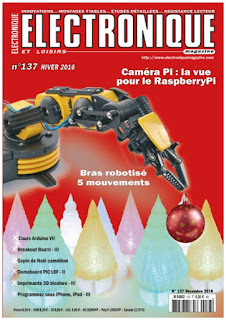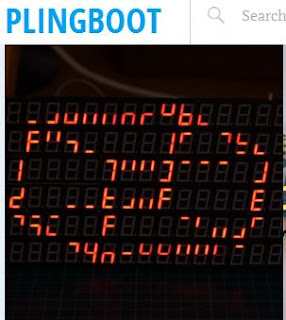Building the kit :
12/05/2020 Update : development of a new fully compatible and easier to use version, based on FPGA, here : https://sillycony.blogspot.com/
I bought recently this kit from the eBay store of Wichit Sirichote (http://www.ebay.fr/sch/kswichit/).
I 'talked' here about the serie of different kind of kit that Wichit currently sells, based of several vintage processors.
The built kit 'must' look like this :
The built kit 'must' look like this :
 |
| From the Wichit blog. |
So, after a little delay, I received a nice package from Thailand :
Thanks Wichit.
The kit contains all the necessary parts to build the système, of course :
 |
| Parts |
 |
| PCB |
 |
| List |
I juste have to report that only the R7 resistor were missing, a 680 Ohms. A common value that my personnal stock provided... The PCB is of professionnal quality with some 'funny' weird things like holes (for the LCD display) under ICs : not matter!
To populate the PCB I did't need the construction manual because all is very simple and well identified onto the PCB and the part list (even the direction of the TVS diode), exept the resistor placed between the Z80 and U4 which is a 10K Ohms.
I began to place the little componants and specially those that provide the 5V. A rapid voltage test confirmed the présence of the power on all the ICs footprints.
 |
| Done! |
I continued with the ICs with/without their sockets. I placed only the RAM/ROM/PLD/AT89 and MAX232 on sockets. The others ICs were directly mounted to the PCB, like the processor. Then, I placed all the others components.
The Z80 provided with the kit was a Toshiba version. I have nothing against Toshiba, but, for a vintage Z80 computer, I prefered to place an original Zilog Z80. The one used has a date code of April 1983 : perfect.
And the very first power test :
The Z80 provided with the kit was a Toshiba version. I have nothing against Toshiba, but, for a vintage Z80 computer, I prefered to place an original Zilog Z80. The one used has a date code of April 1983 : perfect.
And the very first power test :
 |
| Without the red filter. |
Some thermal pictures of the device in operation :
It should be noted that the temperature of the regulator, in this case, is generated by a power supply of 12V and not 9V as recommended. It should be significantly lower with a 9V power supply.
Conclusion : I bought this kit 'to be built '. It took me juste a couple of hours to do that.
I did not encounter any problems and it worked as soon as power was plugged in.
Now, I have to do some programs for it and, of course, make usefull extensions with the extension port!
A very good kit for the price, even better if you buy it not builded!
07/04/2017 update : I made some improvements and modifications to get this board easier to play with.
First, I replaced the MAX232 converter IC with a USB to serial bus micro-module converter. The solution is not intended to stay in place but just when the board is in the 'developpement mode'.
To get this solution very fine, and not to have to plug this module and load the programm every time I power up the CPU80 board, I also replaced the static RAM with a non-volatile one.
Very usefull!
11/29/2017 update : upgrade the kit to the popular uPF1 version with new PAL and EPROM, burned with a Minipro TL866A (in french).










































































